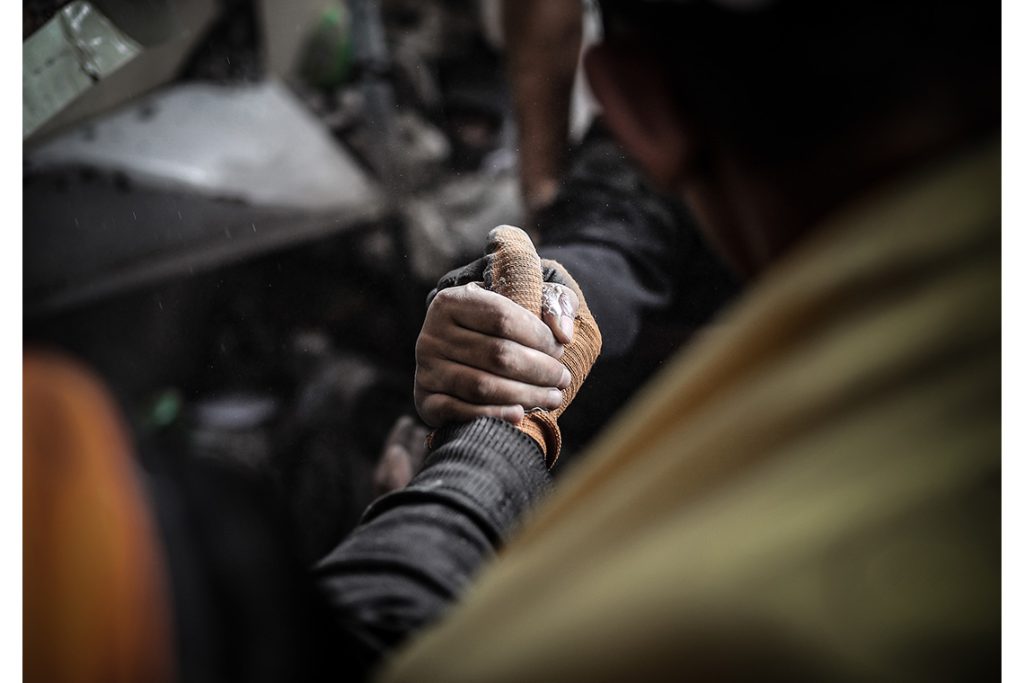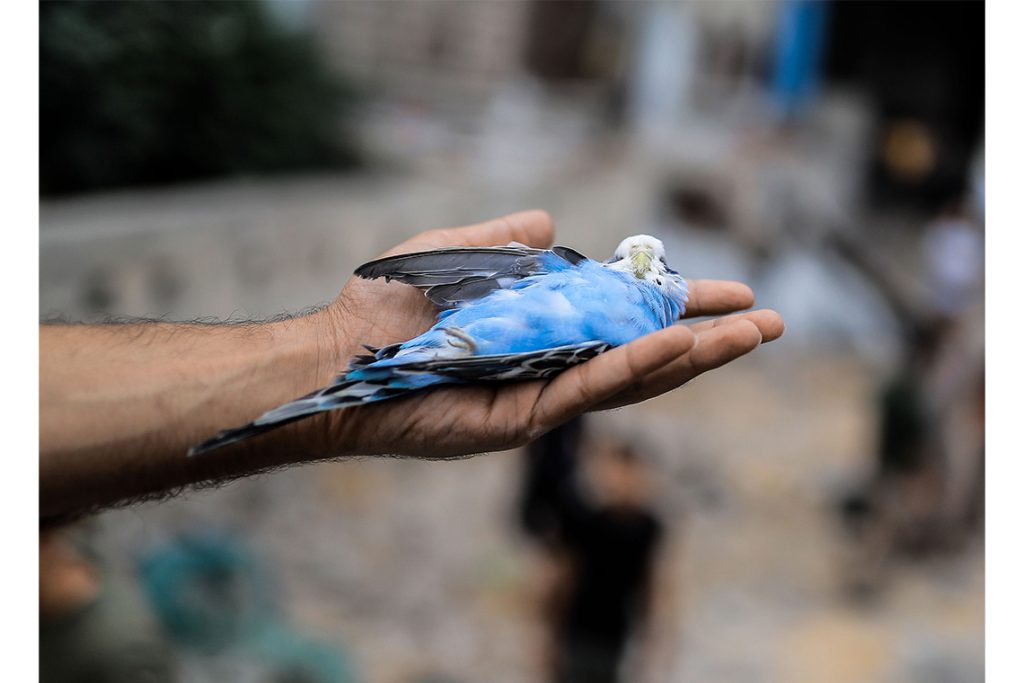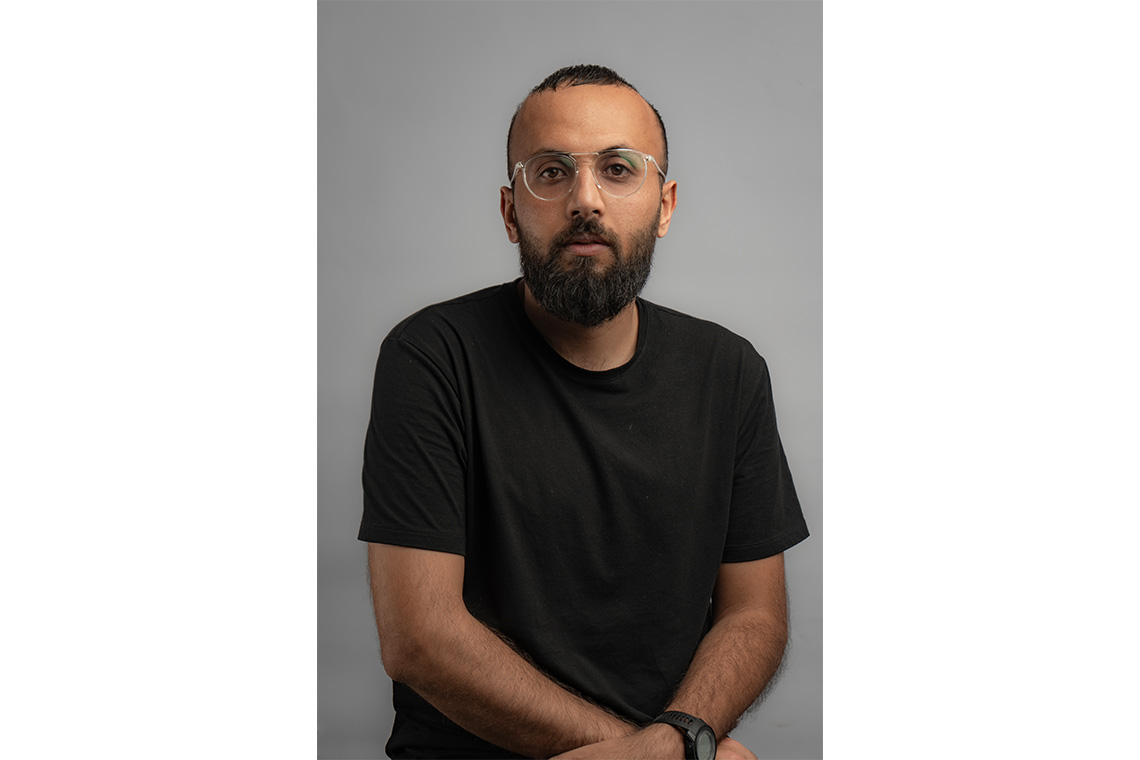Shortlisted for the 11th Prix Pictet, Gazan-born artist Belal Khaled reflects on his work capturing the resilience of the Palestinian people.
Canvas: You grew up in refugee camps in Gaza. How did that experience shape your vision as a photographer and artist?
Belal Khaled: I was born and raised in a refugee camp, where I found myself surrounded by conflict from an early age, living through both the First and Second Intifadas. In our community, politics was a constant part of daily life. I remember families gathering in front of the TV, reading newspapers and following the news closely. It was a reflection of our ongoing struggle under occupation. During the First Intifada, I began to witness events that left a deep impact on me, particularly the killing of Muhammad al-Durrah, which was broadcast live. Something stirred within me at that moment. I felt an urge to take action, to respond in a meaningful way. It was then that I realised the power of the image – how photography and video could evoke emotions, raise awareness and inspire people to act.
I began by documenting life inside the camps, focusing on the protests, hospitals and daily realities under siege. This led to work with Al Jazeera and later as a freelance photojournalist for AFP, Reuters, The Wall Street Journal and The New York Times. After leaving Gaza, I continued to cover global conflict zones, including Syria, Armenia, Azerbaijan, Lebanon and Zimbabwe. My work remains rooted in the belief that photography is a powerful tool to convey human stories, document injustice and deliver a message of shared humanity.
Your recent project Hands Tell Stories 2023–24 focuses intensely on human hands. What first drew your attention to this subject?
It started because I was injured in the ongoing genocide, specifically in my hands. That experience made me reflect on how important our hands are, and it gave me just a small sense of what it might feel like for those who have lost theirs. More than 20,000 children have lost limbs, sometimes two or three. This personal connection became the starting point for the series. The second – and main reason – behind this focus is that I didn’t want to show portraits or individual identities. I want viewers to see the hands and imagine themselves in that position. These hands could represent any child, any journalist, anyone suffering from hunger or war. The difficult part of this project is that the reality in Gaza is often too graphic and distressing for many to face. It leaves a lasting impression because of its simplicity. By focusing on a single subject, hands, it becomes easier for people to remember and connect with.

How do you feel about being shortlisted for the 11th Prix Pictet prize?
It should be a moment of celebration. I should feel happy and proud, but honestly, the passion I had before this genocide is no longer the same. Because of everything we have endured – and continue to endure – it is very difficult to celebrate. Even though I’m currently outside Gaza, the suffering hasn’t stopped. In many ways, we are experiencing more pain now than when we were inside. At least in Gaza, we could work, we could cover what is happening, we could do something.
I’m grateful for the recognition. But I wish it had come under different circumstances, not for documenting loss and suffering, but for showing the beauty, hope and resilience of Palestine. It’s difficult to attend events, sleep in comfort and live normally knowing that many of my colleagues and people back home are still without shelter, still suffering. While I know I’m here to deliver their message and use this platform to raise awareness, I can’t shake off the feeling that it’s not enough. We need to do more. Sometimes, living in safety while they continue to suffer feels like a kind of betrayal.
How has your definition of ‘home’ evolved over the years, especially as someone who has documented so much displacement?
Our home was bombed three times. Twice when my family was inside, suffering injuries, and the third time it was completely destroyed. We didn’t feel like we lost our home, because we felt that Gaza itself is our home. For us ‘home’ is not just four walls. It’s the land, the people, the community. We lost our memories, all of our belongings, years of moments and experiences, but the real pain came when we left Gaza.
When you leave your country, you feel like you have no home. During the war, I lost connection, emotionally and physically. People in the diaspora especially still carry that wound. There is no closure. We don’t even know what happened to many of our family members. I truly believe that, even if you build a life outside your homeland, even if you were born there, it still doesn’t feel like you belong.
I currently live in Qatar, which houses 2,000 injured people. All of them, without exception, are just waiting for the border to open so they can return to Gaza. Even though they need medical treatment, and have nothing left there, they still want to go back.

How do you balance the line between art and documentation, particularly when dealing with trauma, death and survival?
For me, art and documentation are tools of resistance. It is my way of doing something meaningful for my community and for humanity as a whole. In every piece of art I create, there is always a message. I use my art as a weapon, not of violence, but of awareness, memory and change.
On 7 October, I was in Doha. As soon as I saw the news I immediately booked a flight and went to Gaza that same day. I felt I had to be there. I’m a photojournalist, my place was not behind a screen watching the news from afar. I needed to be on the ground, just like Dr Ghassan Abu-Sittah and many others who returned to Gaza to fulfil their mission and help however they could.
Every day I was there, I documented what was happening, people dying, homes collapsing. I completely forgot who I was before, that I was a calligrapher. I only focused on capturing the truth through my camera. But then, one day someone called me. They knew I was a calligrapher and asked me to write a child’s name on their coffin. It made me realise how my life had changed. My canvas was the rubble of destroyed homes. Eventually, I started painting again, but this time my canvas was the rubble of destroyed homes. I began working with children, using art as a form of therapy and a way to hold onto hope, even under the ruins.
In Rafah, I worked with children on a piece called Dreams. We painted on the ruins of a house where 14 people were killed. The children drew what was left of their dreams, dreams of the war ending, of going back to school, of returning home.
After witnessing so much suffering, what gives you hope?
What gives me hope is seeing real people taking real action for Palestine. People are risking everything, like when we see the Global Sumud Flotilla sailing towards Gaza with activists on board risking their lives. Students at universities, especially in the United States, are protesting, despite the threat of losing their scholarships and their immigration status, all in the heart of the countries supporting this genocide.
People are boycotting, speaking out and standing up and we’re slowly seeing governments recognising Palestine, condemning the occupation and calling out the inhumanity happening in Gaza. This serves as a vital hub for documenting the reality on the ground, and I hope that much like how the Vietnam War was brought to an end through powerful imagery, the situation in Gaza might also be resolved through the impact of visual documentation.
Storm, an exhibition featuring the work of the twelve photographers shortlisted for the 11th Prix Pictet prize, is on view at the V&A South Kensington, London, until 19 October. It will then go on tour to the Ishara Art Foundation, Dubai and run from 17 October until 13 December



